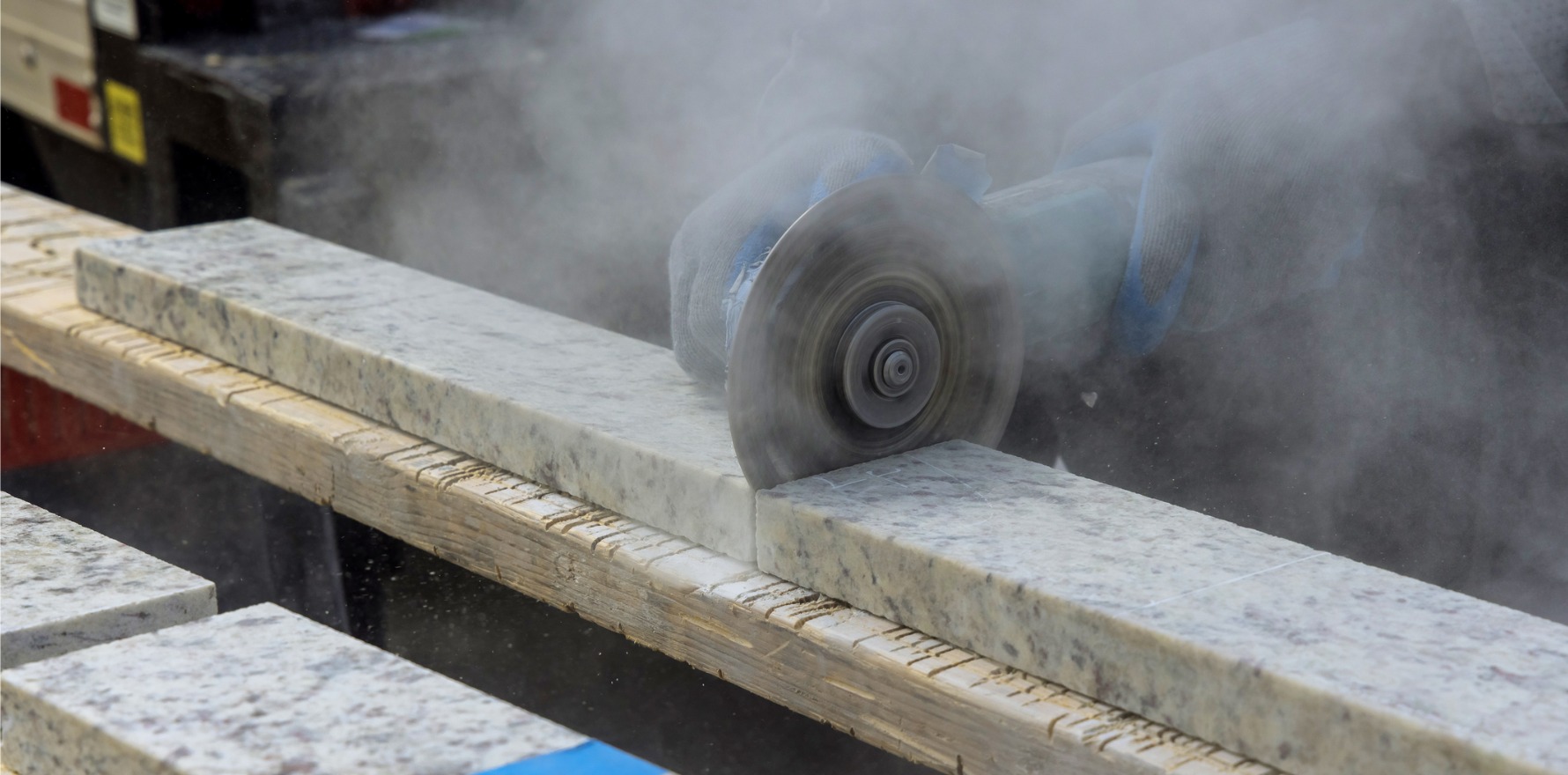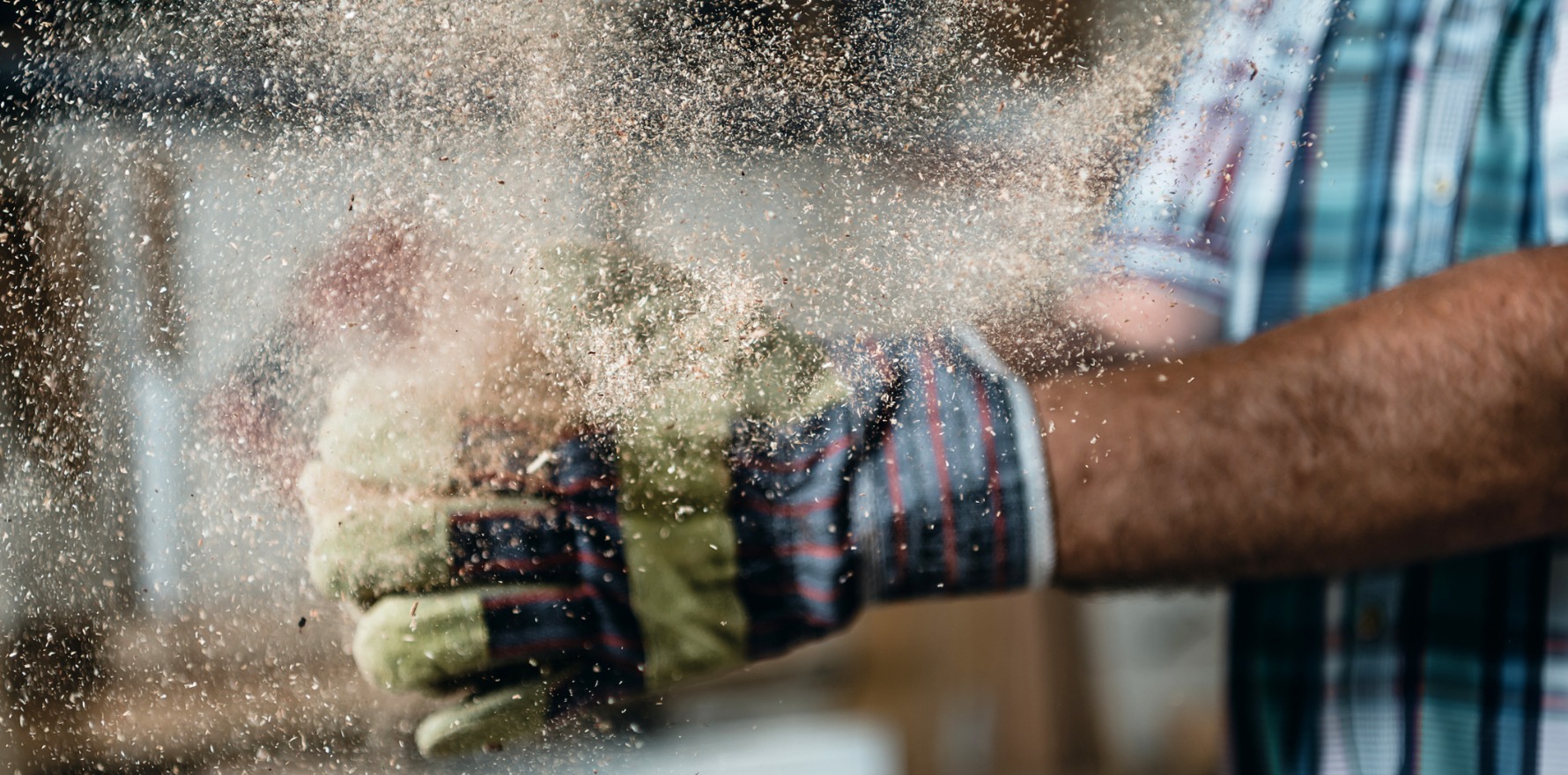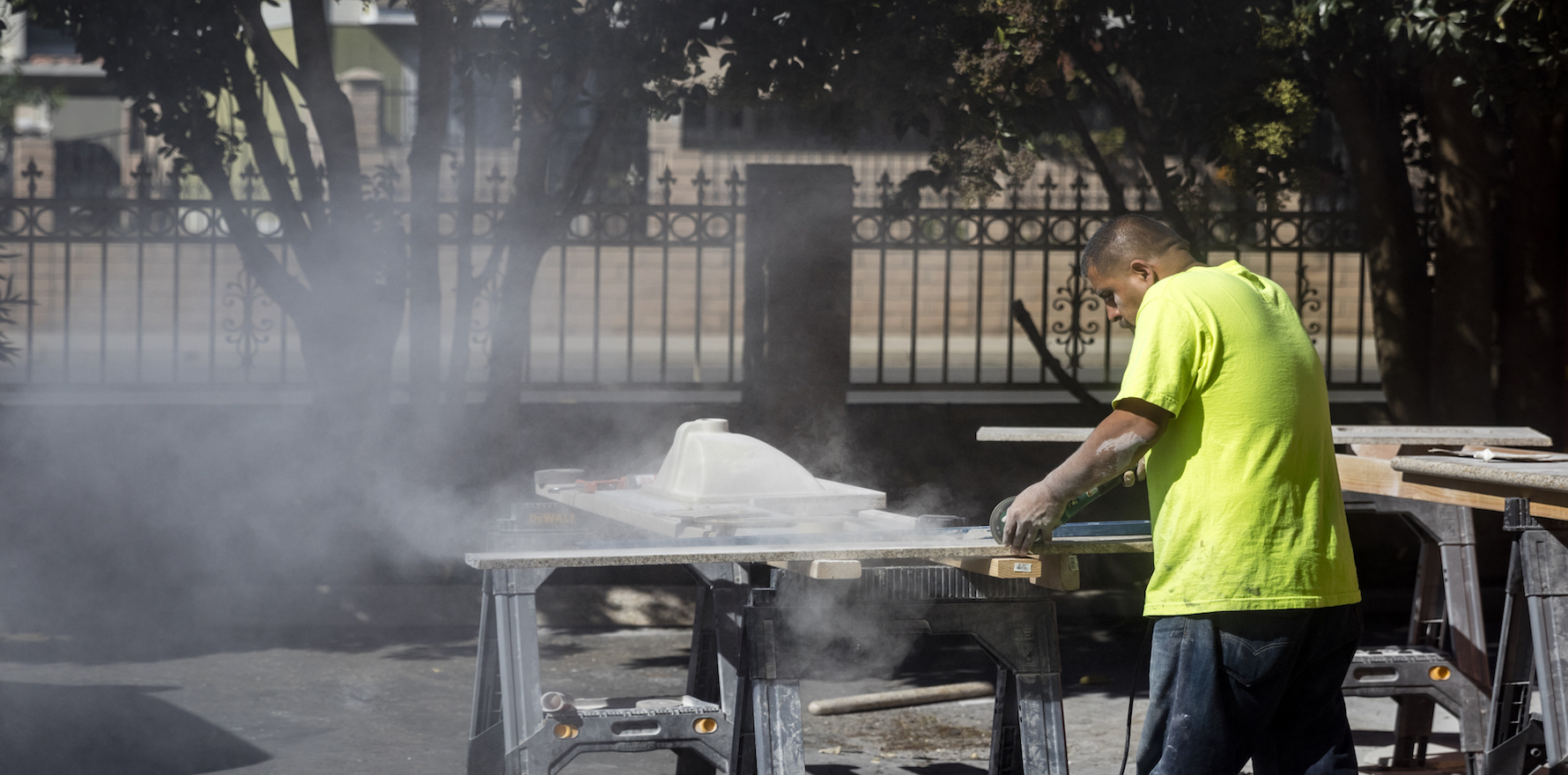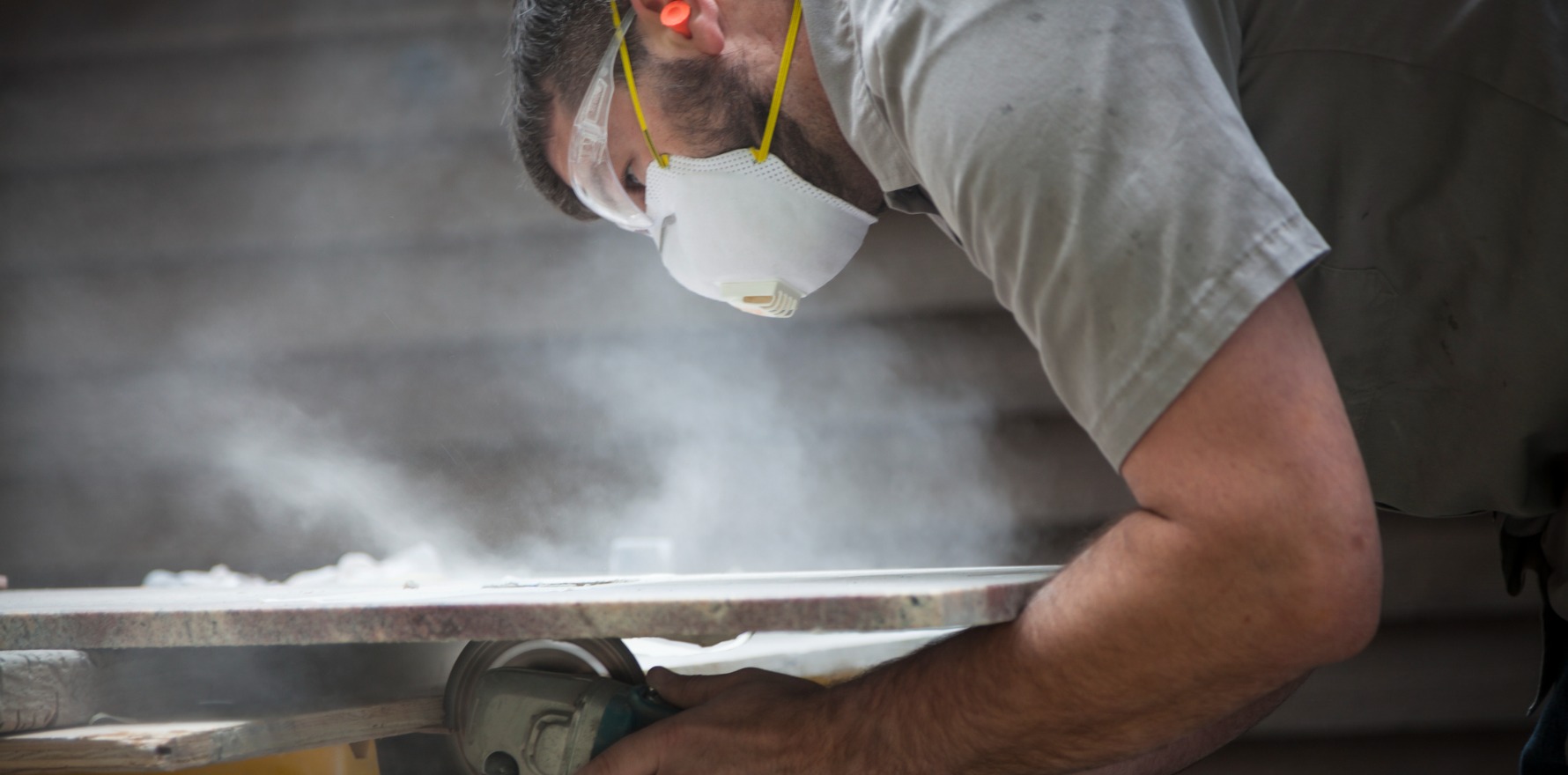Melbourne researchers say long-term follow up is needed to understand how many people who have blood markers for autoimmune diseases go on to develop active disease.
Artificial stone benchtop workers exposed to silica dust may have a higher incidence of blood markers for autoimmune diseases such as rheumatoid arthritis and systemic lupus erythematosus, a large Monash University study has found.
However more research, including follow-up of patients, needs to be done to understand whether they are at higher risk of progressing to actual clinical disease, say the researchers.
In June this year the manufacture, supply and installation of engineered stone benchtops was banned in Australia due to the high incidence of the deadly lung disease silicosis in the sector.
The new study, published in the journal Occupational and Environmental Medicine and led by Professor Karen Walker-Bone, studied a cohort of over 1200 current and former stone benchtop industry workers in Victoria who were offered free screening for silicosis and related disorders between 2019 and 2021.
Melbourne-based rheumatologists Professor Mandana Nikpour, Dr Yuan Lim and Dr Kathleen Morrisroe were also involved with the study.
The researchers looked for symptoms or diagnoses of autoimmune disease as well as markers in the blood that could indicate early stages of autoimmune disease.
One percent of the 1238 male workers were confirmed to have autoimmune disease, however almost one quarter (24.6%) had detectable anti-nuclear antibodies –compared to less than 6% in similarly aged male controls.
Of the 24.3% of the cohort diagnosed with silicosis, 6.6% had very high levels of anti-nuclear antibodies. Importantly the researchers also found associations between autoantibodies and age, smoking, silicosis, and intensity of silica dust exposure.
Professor Walker-Bone said the proportion of workers with detectable markers for autoimmune disease was considerably higher than the 5-9% expected in the general population.
“This data suggests that – as well as screening for silicosis in these workers, they should also be screened for autoimmune disease, as these individuals need specialised management and may be entitled to compensation,” Professor Walker-Bone said.
While cases of autoimmune disease have also been reported in engineered stone benchtop industry workers, this was the first study to look at workers before they develop silicosis.
She said the finding of detectable markers in the blood of autoimmune disease may be an indicator of the worker developing the disease in decades to come.
She told Allergy & Respiratory Republic it was important to recognise that the clinical markers did not equate to active disease, and that some of the men may never develop clinical manifestations.
“I think the main thing is really just to have a lower index of suspicion for a new onset of an autoimmune condition, particularly with silicosis,” she said.
“The one that we’ve observed in the past has been systemic sclerosis or scleroderma, and two of our patients from the stone benchtop industry, sadly, have already developed scleroderma.
And from that, there is this tendency to develop an autoimmune activation, and they then can get clinical phenomena. And the main reason for detecting that is a rapid assessment by a rheumatologist to try to get them on the best possible management, and that they probably are eligible for a very large amount of compensation, which they should be because it’s come from their work.”
Professor Walker-Bone said they were planning further research which would involve following those people who had detectable markers for autoimmune diseases.
“Although having detectable autoantibodies in isolation is not diagnostic of an autoimmune disease, their presence in certain rheumatic diseases, such as SLE and RA, has been shown to predate clinical features often by many years,” she said.
She said general practitioners and rheumatologists should have a high level of suspicion in patients who have been exposed to the dust from engineered stone benchtops and presented with early symptoms of autoimmune disease.
“If you get a young man presenting with new onset Raynaud’s or joint pains or joint swelling, or photosensitive rashes, or hardening of the skin, or any of those hardened or features of an autoimmune disease that you might normally dismiss in a young man, not expecting it to be anything, just to have that awareness there,” she said.
“There is a small but important group of young men that have had this exceptionally high silicosis exposure and from that, there is this tendency to develop an auto immune activation, and they then can get clinical phenomena.
“And the main reason for detecting that is a rapid assessment by a rheumatologist to try to get them on the best possible management, and that that they are probably also eligible for a very large amount of compensation, which they should be because it’s come from their work.”
Related
Long-term follow-up of these patients would also provide valuable information for the government-funded silicosis screening clinics.
“One concern is that a number of those with detectable autoantibodies will go on to manifest clinical disease with prolonged follow-up,” she said.
“However, the government screening clinics for the diagnosis of silicosis are not set up to bear the costs of longer-term follow-up of workers with high exposure who do not yet have detectable silicosis, let alone those who may /may not develop autoimmune disease.”
Professor Walker-Bone told ARR that the health impacts of engineered stone benchtops could take many years to be fully understood.
“I think going forward, nobody will take that risk with this product again, even in the removal, it’ll be like asbestos removal much, much more protected,” she said.
“But it is important that we don’t just let it fall off people’s awareness.”





